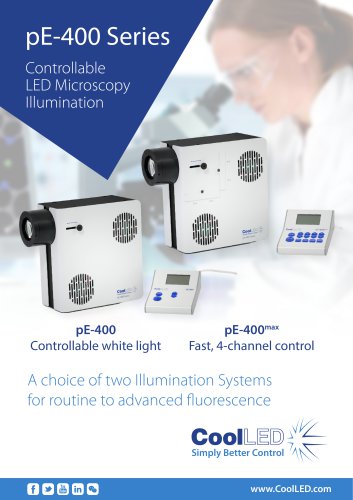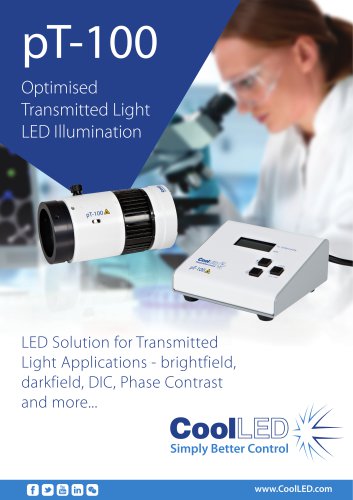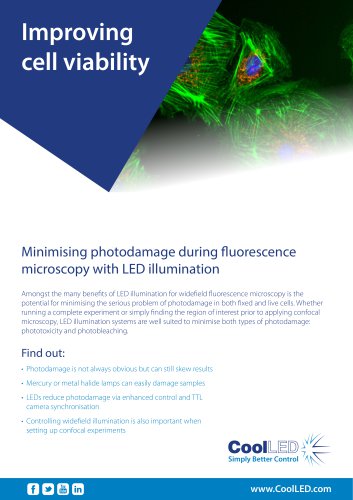
Catalog excerpts
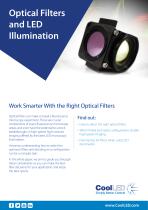
Optical Filters and LED Illumination Work Smarter With the Right Optical Filters Optical filters can make or break a fluorescence microscopy experiment. These are crucial components of every fluorescence microscope setup, and even have the potential to unlock breakthroughs in high-speed, high-contrast imaging offered by the latest LED microscopy illumination. However, understanding how to select the optimum filters and deciding on a configuration can be a complex task. Find out: • How to select the right optical filters • Which Pinkel and Sedat configurations enable high-speed imaging • Five top tips for filters when using LED illumination In this white paper, we aim to guide you through these complexities so you can make the best filter decisions for your application, and enjoy the best results. Simply Better Control
Open the catalog to page 1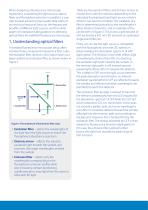
When designing a fluorescence microscopy experiment, considering the light source, optical filters and fluorophore selection in parallel is a sure step towards achieving high quality data. Many of our technical resources focus on the features and benefits of different light sources, and this white paper will instead provide guidance on selecting optical filters for widefield fluorescence microscopy. 1. Understanding optical filters A standard fluorescence microscope setup often includes three components housed in a filter cube – the excitation filter, dichroic mirror (also known as a beam...
Open the catalog to page 2
Figure 2: Optical filters and light source for GFP imaging. Single-wavelength imaging of GFP using a 470 nm LED from the CoolLED pE-100 (blue plot), exciting GFP along its excitation spectrum (light green). The excitation light path travels through the excitation filter (purple) and wavelengths below 495 nm are reflected onto the sample by the dichroic mirror (red). This energy is absorbed and released as fluorescence to form the GFP emission spectrum (dark green), and the dichroic mirror (red) transmits light above 495 nm to pass to the detector. Background noise is further removed by the...
Open the catalog to page 3
Sedat filters - To avoid any risk of bleed-through, a Sedat filter configuration uses a similar setup to the Pinkel, but also with single-band emission filters. To avoid the use of emission filter wheels (where movement can introduce latency and restrict imaging speeds), a clever trick is to incorporate an image splitter into the emission light path. These split the emission light path into up to four images displayed on different areas of the camera chip (or different camera in the case of a camera splitter), and house the single-band emission filters which sit in the light path. This...
Open the catalog to page 4All CoolLED catalogs and technical brochures
-
pE-400 Series
4 Pages
-
pT-100
2 Pages
-
Improving cell viability
4 Pages


